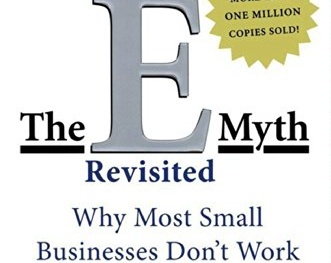An SMSF gives you the ability to choose how your superannuation savings are invested, providing greater flexibility and control over your financial future. But setting an SMSF up can be tricky.
Let’s take a look at how to set up an SMSF, going through the process step by step.
1. Consider Appointing Professionals to Help You
Setting up and managing a Self-Managed Superannuation Fund (SMSF) requires careful consideration. Working with a team of professionals means your fund is established in compliance with relevant regulations and positioned for success.
Here are a few different types of professionals you might want to engage.
Accountant
An SMSF accountant can help set up your fund and, once operational, prepare your fund’s accounts and operating statements.
Fund Administrator
A fund administrator can assist with administrative tasks during the startup phase and help you manage the day-to-day running of your SMSF once established. There are specialist administration firms who just do SMSF administration. However, for a more comprehensive package, including tax planning, your accountant would be best to fulfil this role.
Legal Practitioner
A legal practitioner can prepare and update your fund’s trust deed, ensuring it aligns with current legislation.
Financial Advisor
A financial advisor can help you develop an appropriate investment strategy and provide guidance on various investment and insurance products suitable for your SMSF.
SMSF Auditor
You’ll need an approved SMSF auditor to audit your fund annually, as required by law.
Tax Agent
A tax agent can complete and lodge your SMSF’s annual return, offer tax advice, and represent you in dealings with the Australian Taxation Office (ATO).
Having the right team around you from the outset will give you greater peace of mind as you take control of your retirement savings.
2. Structure Your SMSF
There are two structures to choose from when looking at SMSFs: one governed by individual trustees, and one by a corporate trustee:
Individual Trustees
If you opt for individual trustees, each member of your SMSF must also be a trustee, and vice-versa. This structure is common for funds with 2 to 6 members. A notable restriction is that a member cannot be an employee of another member, unless they are related. Additionally, some state and territory laws limit the number of trustees a trust can have to fewer than 6, which could impact your SMSF depending on your location.
Benefits:
- No ASIC fees for establishment or ongoing administrative requirements.
- Simpler and less costly to establish compared to a corporate trustee.
Drawbacks:
- Changing trustees requires changing the titles of the SMSF’s assets, which can be costly and time-consuming.
- If super laws are breached, penalties are levied on each trustee individually.
Corporate Trustee
A corporate trustee involves establishing a company to act as the trustee for the fund, with each member being a director of that company. This structure is also suitable for 2 to 6 members.
Benefits:
- Simplifies the management of fund assets, especially when changing members.
- Offers limited liability protection, providing a layer of security against potential lawsuits.
- Continuity of the fund is more secure in the event of a member’s death or incapacity.
Drawbacks:
- Higher initial setup costs due to ASIC registration fees.
- Annual review fees apply, which vary depending on whether the corporate trustee undertakes roles other than managing the super fund.
Cost Considerations
Choosing a corporate trustee generally involves higher initial costs but can lead to simpler and potentially cheaper management of the fund in the long term, especially regarding asset registration and membership changes.
Ownership and Separation of Fund Assets
Both structures require that the fund’s assets are registered in the trustees’ names and kept separate from personal assets. However, a corporate trustee provides easier management of asset titles since the corporate entity remains constant, even with membership changes.
Penalties and Compliance
Compliance is critical in managing an SMSF. Breaches of super laws can lead to significant penalties, whether financial or administrative. Individual trustees face penalties individually, while a corporate trustee faces them as a single entity, which can simplify the resolution of breaches.
Succession Planning
Continuity and succession are more streamlined under a corporate trustee structure. The death or incapacity of a member affects an SMSF less when a corporate trustee is involved, ensuring smoother transition and control of the fund’s assets.
3. Choose Your Directors or Trustees
Let’s look at the steps to choose and appoint your trustees or directors.
Trustee and Director Consent
An SMSF is built on the consent and eligibility of its trustees or directors. Each trustee or director must formally consent to their appointment in writing and sign a Trustee Declaration within 21 days of their appointment.
Key Steps
- Eligibility Check: Verify that potential trustees or directors are not disqualified persons. This means they should not have been convicted of dishonest conduct, issued with a civil penalty order, be bankrupt or insolvent, or have been previously disqualified by the ATO or APRA.
- Consent and Declaration: Each appointed trustee or director must consent in writing to their appointment and sign the Trustee Declaration confirming they understand their duties.
- Record Keeping: Maintain these consent forms and declarations on file for the duration of the SMSF’s existence and for ten years after it winds up.
- Director Identification Number (DIN): For corporate trustees, each director needs to obtain a DIN from the Australian Business Registry Services. This is a unique and permanent identifier necessary for all directors in Australia.
Who Can Be a Trustee or Director?
- Age: Must be 18 years or older and not under any legal disability, such as mental incapacity.
- Legal Status: Must not be an undischarged bankrupt or under external financial administration.
- Background: Must not have a history of dishonesty, such as fraud or theft, which resulted in conviction or a civil penalty order.
For members under 18, a parent, guardian, or legal personal representative may serve as a trustee or director on their behalf.
Responsibilities
Being a trustee or director comes with significant responsibilities:
- Act honestly in all matters concerning the fund.
- Always act in the best interests of all fund members.
- Manage the fund separately from your own affairs.
- Ensure compliance with all relevant laws and bear the ultimate responsibility for the fund’s actions.
Legal Personal Representatives
In cases where a member cannot act (due to minority, disability, or death), a legal personal representative can act as a trustee or director. However, they cannot serve on behalf of a disqualified person.
Trustee Declaration
This declaration is crucial as it serves as a formal acknowledgment by the trustees or directors of their understanding of the obligations involved in running an SMSF. It’s essential that this declaration is completed and signed within the prescribed time frame.
4. Create a Trust and Trust Deed
The next step is creating a trust and trust deed.
Establishing a Trust for SMSF
An SMSF is a form of a trust. The creation of this trust involves the following:
1. Selecting trustees or Corporate Trustee
- The trust must have trustees, which can either be individuals or a corporate entity acting as a single trustee, as outlined above.
2. Outlining the governing Rules (Trust Deed)
- The trust deed is the legal document that outlines the operation and governance of the fund. It sets the foundation for how the SMSF operates.
3. Establishing assets
- An initial asset is required to establish the trust legally. This is often a nominal amount, such as $10, which is attached to the trust deed.
4. Identifying Beneficiaries
- The beneficiaries of an SMSF are its members. They must be clearly identified in the trust deed.
Drafting the Trust Deed
The trust deed details the rules under which the fund will operate and how it will serve its members. Here’s what you need to include and consider in the trust deed:
Key Elements of a Trust Deed:
- Objective of the Fund: This includes the purpose of the SMSF, mainly to provide retirement benefits.
- Membership Eligibility: Defines who can be a member of the SMSF.
- Types of Benefits: Specifies whether benefits are paid as a lump sum, income stream, or both.
Legal Requirements:
- Competent Preparation: The trust deed must be prepared by someone with the appropriate legal expertise to ensure compliance with current laws.
- Signatures: All trustees or directors of the corporate trustee must sign and date the deed.
- Proper Execution: The deed must be executed in accordance with the relevant state or territory laws.
- Regular Reviews: The trust deed should be regularly reviewed and updated as necessary to accommodate changes in the law or the circumstances of the members.
Allocating Assets
To formally establish the trust, assets must be allocated for the benefit of the members. Initially, a nominal consideration (such as $10) is used during the setup phase. This amount is treated as a contribution and should be allocated to a member’s account within the fund. This is crucial for the legal registration and operation of the SMSF.
Special Considerations for Contributions:
If a member is over 65 or fails the work test and cannot make contributions, administrative discretion allows for a nominal contribution to be made on their behalf solely for the purpose of registering the SMSF.
5. Check Your Fund Qualifies as an Australian Super Fund
Ensuring that your Self-Managed Super Fund (SMSF) qualifies as an Australian super fund is crucial. Here’s how to meet these criteria.
Fund Residency Conditions
To qualify as an Australian super fund, your SMSF must satisfy all three of the following residency conditions:
1. Establishment in Australia
- Your SMSF is considered to have been established in Australia if the initial contribution used to set up the fund was paid and accepted within Australia.
- Alternatively, the SMSF can qualify if at least one of its assets is located in Australia.
2. Central Management and Control in Australia
- The central management and control of your SMSF must ordinarily be in Australia. This refers to where the strategic decisions and high-level duties are regularly carried out. Key activities include:
- Formulating the investment strategy.
- Reviewing the fund’s performance.
- Managing any reserves prudently.
- Deciding on the use of assets for member benefits.
- An SMSF can temporarily have its central management and control outside of Australia for up to two years without affecting its residency status. However, if the central management and control is permanently located outside Australia, the fund will fail this condition.
- If you’re thinking about relocating overseas for a period of time, make sure you discuss this with your accountant or tax advisor.
3. Active Member Condition
- The SMSF either has no active members, or its active members are Australian residents who hold at least 50% of:
- The total market value of the fund’s assets (attributable to super interests).
- The total sum that would be payable to these members if they decided to leave the fund.
What Happens if Members Go Overseas?
Planning Extended Stays Abroad
- If any of your SMSF members plan to go overseas for an extended period, you should seek professional advice to ensure the fund continues to meet the Australian residency requirements.
Contributions by Non-Residents
- Members who become non-residents during their time abroad should consider making or receiving super contributions through a retail or industry super fund instead of their SMSF. They can then transfer these contributions back to their SMSF upon returning to Australia and regaining their resident status.
If Residency Conditions Fail
- If your SMSF fails to meet the residency conditions, you should consider rolling over the funds to a resident regulated super fund and winding up the SMSF to avoid it becoming non-complying, which can have significant tax implications.
6. Register Your SMSF and Get an ABN
Registering your Self-Managed Super Fund and obtaining an Australian Business Number (ABN) is a crucial step in setting up your fund properly. Here’s how to do it.
Before You Register
Before applying for registration, ensure that:
- You have appointed your trustees or set up a corporate trustee.
- The trust has been properly established with an initial asset transferred.
- The fund qualifies as an Australian super fund.
- The company (if used as a corporate trustee) is eligible to act.
Registering Your SMSF
Once the above requirements are met, you can register your SMSF within 60 days of its establishment by applying for an ABN. During this process, you should also:
- Request a Tax File Number (TFN) for the fund.
- Opt for your fund to be regulated by the ATO. Without this, your fund won’t receive tax benefits, and employers can’t claim deductions for their contributions.
- Consider whether you need to register for Goods and Services Tax (GST), which is necessary if your SMSF’s annual GST turnover exceeds $75,000.
Common Mistakes to Avoid
- Ensure the SMSF trust is correctly set up before applying for an ABN.
- Double-check that all member, trustee, or director details are accurate and complete.
What You Need for Your Application
When filling out the application, you will need:
- The SMSF’s name as it appears in the trust deed.
- The date the SMSF was established.
- Bank account details where the SMSF’s transactions will occur.
- An Electronic Service Address (ESA) for handling rollovers and contributions.
Updating Your Details
Keep your SMSF’s details up to date to facilitate smooth operations. Notify the ATO of any changes through your registered agent, online services, or by phone.
Checking Your Registration Status
Once registered, you can check the status of your SMSF’s ABN:
- ABN Lookup: Shows the current status of your ABN.
- Super Fund Lookup: Reflects the registration status with the ATO, important for employers and other super funds transferring benefits to your fund.
Handling Delays and Issues
Registration might be delayed if:
- Pre-registration steps are incomplete.
- The identity of associates can’t be confirmed.
- There are concerns about the trustees’ or directors’ capability to manage the SMSF.
Be proactive in addressing any issues the ATO may raise to avoid lengthy delays.
By following these guidelines, you can ensure your SMSF is properly registered and compliant, ready to operate effectively within the regulatory framework.
7. Set Up the Bank Account for Your SMSF
Your SMSF needs a bank account. Here’s how to set up and maintain the bank account for your SMSF.
Why Your SMSF Needs a Bank Account
An SMSF requires a unique bank account to:
- Manage daily operations and transactions.
- Receive contributions from members or employers.
- Accept rollovers from other superannuation funds.
- Collect income generated from investments.
- Pay out the fund’s expenses and liabilities.
SMSF Bank Account Requirements
Choosing the Right Account
Ensure that the bank account you open for your SMSF:
- Is registered under the SMSF’s name.
- Has an Australian Business Number (ABN) linked to it once your fund is registered.
- Is unique to your SMSF and not shared with any personal or other business accounts to safeguard your members’ retirement benefits.
Maintaining Separation
It’s essential to keep the SMSF’s bank account separate from:
- The trustees’ personal bank accounts.
- Any business accounts of related employers.
Record Keeping
While a separate bank account for each member is not required, detailed records for each member’s contributions, earnings, and benefits must be meticulously maintained. This helps in accurate reporting and ensures each member’s entitlements are clearly documented and traceable.
Notifying Changes to Your Fund’s Bank Account
How to Notify
You can update or notify changes to your fund’s bank account through:
- A registered agent.
- Online services for business.
- Direct communication with the ATO via phone at 13 10 20.
- Lodging a SMSF Annual Return (SAR).
Alert System
The ATO sends alerts via email or text message when changes are made to your SMSF’s bank account details. If you receive an alert without prior knowledge of changes, it is critical to contact the ATO immediately to ensure no unauthorised changes have been made.
If You Suspect Fraud
Vigilance Over Access
As an SMSF trustee, ensure that only authorised persons have access to the SMSF bank account. Regularly review and confirm the list of individuals who have third-party authority or are signatories on the account.
Immediate Action
If you suspect any fraudulent activity such as unauthorised access or transactions:
- Report immediately to your bank.
- Review and secure your bank account details.
- Remove unauthorised persons who might have access to the account.
8. Acquire an Electronic Service Address
Your Self-Managed Super Fund (SMSF) must have an Electronic Service Address (ESA). Here’s how to acquire one.
What is SuperStream?
SuperStream is a standard for processing superannuation data and payments electronically. It aims to enhance the efficiency and accuracy of the superannuation system by requiring electronic transactions. For SMSFs receiving employer contributions or managing rollovers, using SuperStream is mandatory.
Why Your SMSF Needs an ESA
An Electronic Service Address (ESA) is a unique internet address (distinct from an email address) used specifically for receiving SuperStream data. This address is necessary for your SMSF to:
- Receive contributions from employers not related to the SMSF trustees.
- Handle rollovers of super to or from your SMSF.
How to Acquire an ESA
Choose a Provider
You can obtain an ESA through:
- Your SMSF administrator, if they provide one.
- A registered SuperStream message solution provider. These providers are equipped to handle the data requirements of SuperStream and can ensure that your SMSF is compliant.
Update Your SMSF Records
Once you have your ESA, it is crucial to update your records with the Australian Taxation Office (ATO):
- Notify the ATO of your new ESA by updating your details through the Online services for business, via a registered agent, or by calling the ATO.
Provide Your ESA to Employers
Employers making contributions to your SMSF will need:
- Your Australian Business Number (ABN).
- Your SMSF’s bank account details (BSB and account number).
- Your SMSF’s Electronic Service Address (ESA).
Ensuring Compliance with SuperStream
To ensure your SMSF complies with SuperStream:
- Verify that your ESA provider is approved and capable of handling SuperStream data and payments.
- Keep all your SMSF details, including ABN and bank account information, current and accurate to avoid processing delays.
9. Prepare an Exit Strategy for Your SMSF
Even when setting up your Self-Managed Super Fund (SMSF), you should plan for its eventual wind-up. Here’s how to prepare an exit strategy that takes into account various scenarios that might necessitate ending the fund.
Components of an Effective SMSF Exit Strategy
1. Accessibility of Records and Accounts
- Ensure that all trustees have access to the SMSF’s records and electronic transaction accounts. This accessibility helps in seamless management and decision-making, especially if one trustee becomes unable to fulfil their duties.
2. Incorporate Wind-up Clauses in the Trust Deed
Your fund’s trust deed should include specific clauses that activate during certain events, such as the death or incapacity of a trustee. These clauses can dictate how the fund should proceed, potentially simplifying the wind-up process.
3. Binding Death Benefit Nominations
- Encourage members to make binding death benefit nominations and renew them every three years to ensure that benefits are distributed according to the members’ wishes in the event of their death.
4. Enduring Power of Attorney
- Encourage members to appoint an enduring power of attorney. This allows someone they trust to manage their affairs if they become incapacitated, ensuring that their interests in the SMSF are looked after.
5. Consider the Costs of Winding Up
- Be aware of the potential costs involved in winding up an SMSF. These can include legal fees, accounting fees, and costs associated with selling assets. Planning for these costs can prevent financial strain when the fund needs to be dissolved.
6. Regular Reviews and Updates
- Regularly review and update your exit strategy to address changes in the fund’s situation or in superannuation laws. Staying current ensures that the strategy remains effective and relevant.
JD Scott + Co Is Here to Help
At JD Scott + Co, we specialise in providing seamless Self-Managed Super Fund (SMSF) setup services.
Our expertise is tailored to meet the unique needs of Australians seeking to establish their own SMSFs. We offer a streamlined and professional service to ensure your superannuation fund is not only compliant with Australian regulations but also structured effectively for your financial future. So if you’re in need of an SMSF accountant, contact us today.














